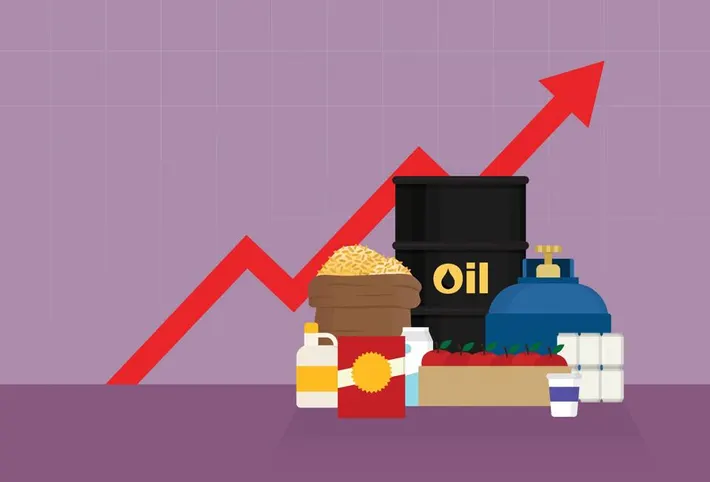By Sean Dempsey, 3/19/25
This is a response to Max Baecker’s terribly misguided recent piece in Forbes.
The Real Cause of Rising Commodity Prices: Inflation, Not a Bubble
The surge in commodity prices today is not the result of a speculative bubble but rather a direct consequence of inflation caused by a massive expansion of the money supply in 2020-2021. Inflation, properly defined, is an increase in the supply of money or credit, which reduces the purchasing power of a currency and leads to higher prices across the board.
While some analysts argue that the current rise in commodity prices is due to speculation or cyclical demand trends, the deeper issue is monetary. When governments and central banks dramatically increase the supply of money without a corresponding increase in productivity or goods, the value of that money declines, and prices naturally adjust upward. The recent commodity price increases—especially in gold, oil, and agricultural products—are a predictable outcome of these monetary policies, not a temporary market anomaly.
The 2020-2021 Money Supply Explosion
During the COVID-19 pandemic, governments worldwide, particularly in the U.S., engaged in unprecedented levels of monetary expansion to offset economic disruptions. The Federal Reserve slashed interest rates to near zero, launched extensive quantitative easing programs, and pumped trillions of dollars into the economy through direct stimulus payments, business loans, and asset purchases.
As a result, the M2 money supply, which includes cash, checking deposits, and easily convertible near-money assets, skyrocketed. Between February 2020 and February 2021, the U.S. money supply grew by approximately 26.6%, followed by another 12.3% increase from 2021 to 2022. In total, this amounted to a 42.2% increase over two years—one of the largest monetary expansions in U.S. history.
This explosion in money supply was not accompanied by an equivalent increase in goods and services. While the government injected liquidity into the system, supply chain disruptions, labor shortages, and pandemic-related shutdowns restricted production. With more money chasing fewer goods, inflation took hold across multiple sectors.
Inflation and Its Impact on Commodities
When a currency loses purchasing power due to inflation, commodity prices rise. This is because commodities like gold, oil, and agricultural products are priced in U.S. dollars. As the dollar weakens, it takes more dollars to buy the same amount of goods.
Gold, often considered a hedge against inflation, has reached all-time highs, surpassing $3,000 per ounce. This surge is not due to speculative mania but rather a rational response by investors seeking to protect their wealth from currency depreciation. Other precious metals, such as silver and platinum, have also seen significant price increases.
Oil prices have similarly climbed, driven not just by supply constraints but by inflationary pressures. Historically, oil prices tend to rise when the dollar weakens because oil is traded globally in U.S. dollars. As the purchasing power of the dollar declines, oil-producing nations demand higher prices to compensate for their declining real returns.
Agricultural commodities, including wheat, corn, and soybeans, have also seen price spikes. Rising input costs, such as fertilizer and fuel—both affected by inflation—have pushed food prices higher. Additionally, as investors look for tangible assets to hold value in an inflationary environment, agricultural commodities become attractive investment vehicles.
The Fallacy of the “Bubble” Narrative
Some financial analysts and media reports describe the current commodity surge as a speculative bubble, implying that prices will eventually crash when investor sentiment shifts. However, this analysis overlooks the fundamental driver of these price increases—monetary expansion.
A speculative bubble typically occurs when asset prices rise far beyond their intrinsic value due to irrational exuberance. The dot-com bubble of the late 1990s and the housing bubble of the mid-2000s were fueled by excessive speculation disconnected from real economic fundamentals. The current commodity rally, in contrast, is rooted in a measurable decline in the dollar’s purchasing power.
The key difference is that while bubbles collapse when investor sentiment reverses, inflation-driven commodity price increases persist as long as monetary policies remain loose and the currency continues to weaken. Unless central banks aggressively contract the money supply—which is politically and economically challenging—high commodity prices are likely to remain.
Future Implications: What Comes Next?
If inflation continues unchecked, commodity prices will remain elevated, and we may see further instability in global markets. Historically, once inflation takes hold, it becomes difficult to reverse without painful monetary tightening, which can lead to recessions.
Central banks face a difficult choice:
- Tightening monetary policy – Raising interest rates and reducing liquidity could slow inflation but would also risk triggering a recession. Higher borrowing costs could stifle economic growth, making this option politically unpopular.
- Allowing inflation to persist – If central banks keep interest rates low and maintain an accommodative stance, inflation will continue to erode purchasing power, leading to sustained high prices in commodities and other assets. This scenario benefits those holding tangible assets but harms wage earners and savers.
For investors, the key takeaway is that commodities remain one of the most reliable stores of value during periods of high inflation. Gold, oil, and agricultural products will likely continue to attract investment as long as inflationary pressures persist.
Conclusion
The recent surge in commodity prices is not a speculative bubble but a direct consequence of inflation, fueled by the unprecedented expansion of the money supply in 2020-2021. As the value of the dollar declines, commodity prices rise in response, reflecting the reduced purchasing power of fiat currency.
Rather than dismissing these price increases as temporary market distortions, policymakers and investors should recognize them as a fundamental consequence of loose monetary policies. Until meaningful steps are taken to stabilize the money supply, commodity prices are likely to remain high, reshaping investment strategies and economic policies for years to come.


